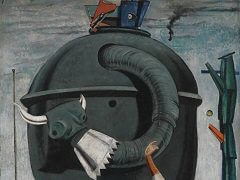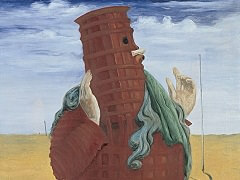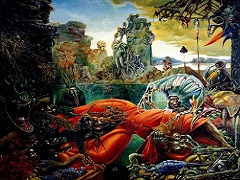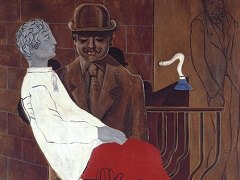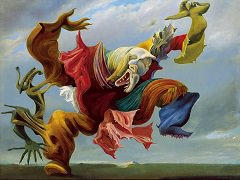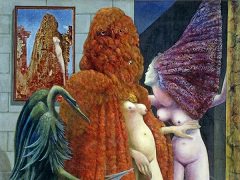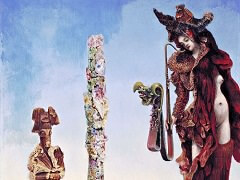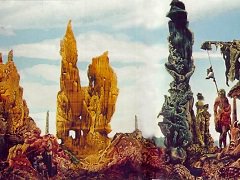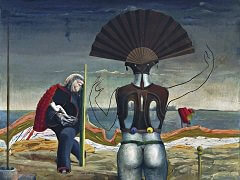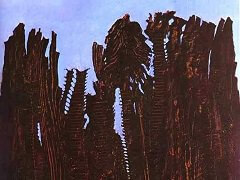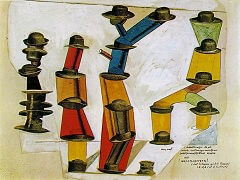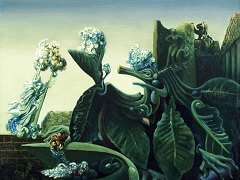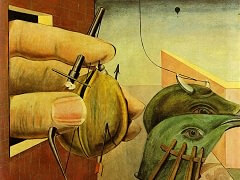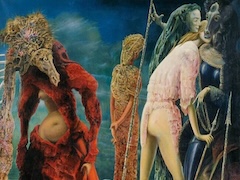Men Shall Know Nothing of This, 1923 - by Max Ernst
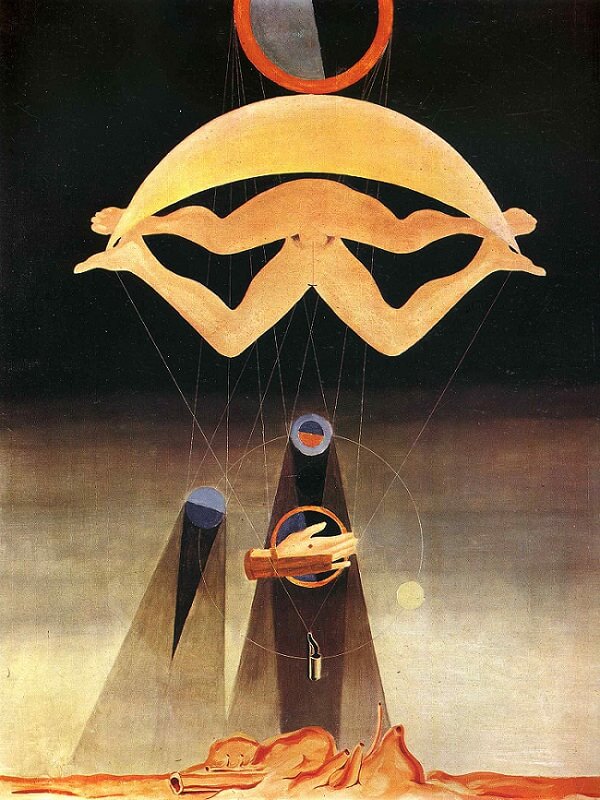
Max Ernst studied philosophy and psychology in Bonn and was interested in the alternative realities experienced by the insane. This painting may have been inspired by the psychoanalyst Sigmund Freud's study of the delusions of a paranoiac, Daniel Paul Schreber. Freud identified Schreber's fantasy of becoming a woman as a 'castration complex'. The central image of two pairs of legs refers to Schreber's hermaphroditic desires.
The back of this picture is inscribed with a mysterious and enigmatic prose poem, which can be translated as follows: OF THIS MEN SHALL KNOW NOTHING
Ernst had studied philosophy and psychology at the University of Bonn from 1909 to 1914. In 1913 he had read Freud's The Interpretation of Dreams and Wit and its Relation to the Unconscious and took so much interest in these subjects that he wanted at one time to be a psychiatrist. Andre Breton, whom he first met in 1921, had also long been interested in psychoanalysis: he had been a medical student from 1913 at the Sorbonne and in the First World War had served from 1915 as a medical assistant, first at the neurological centre in Nantes and then from 1917 at the psychiatric centre at Saint-Dizier.
The crescent (yellow and like a parachute) prevents the little whistle falling to the ground. This whistle, because people are taking notice of it, thinks it is climbing to the sun.
The sun is divided into two so that it can spin better.
The model is stretched out in a dreaming pose. The right leg is bent (a pleasant exact movement).
The hand hides the earth. Through this movement the earth takes on the importance of a sexual organ.
The picture is curious because of its symmetry. The two sexes balance one another.
Max Ernst confirmed in February 1970 that this poem was written by himself. It is followed by a dedication to Andre Breton, to whom he gave this picture.
At the top of the painting there is a mysterious 'sun'. From it rays descend to circling astral bodies - 'the earth' (covered by a disembodied hand) with attendant planets. Above, the lower halves of a man and woman copulate in space. An upturned 'crescent moon'/'parachute' supports a 'little whistle'. From an arid desert of viscera and stones rise two strange protuberances, strongly suggestive of ambi-sexual phalli. All this takes on a distinctly Freudian character.

